- John Moore
- Executive Director
- GLOBE Mission Earth
- http://www.palmyracove.org/
- Institute for Earth Observations
- Peter Dorofy
- https://www.linkedin.com/in/peter-dorofy-b0465554/
- Director of Science and Technology
- GLOBE Mission Earth
- http://www.palmyracove.org/
- Institute for Earth Observations, Rowan College at Burlington County
GLOBE Mission Earth
NNX16AC54A
As a partner organization working with the NASA “GLOBE Mission Earth: Fusing GLOBE with NASA Assets to Build Systematic Innovation in STEM” Team at the University of Toledo, the Institute for Earth Observations has developed K12 outreach programing and advances in “mixed reality” technologies to “Connect Students to Earth SySTEM through Mixed Realities”. Earth SySTEM utilizes satellite imagery, remote sensing technology, real-time data, and computer visualizations to facilitate interactions between STEM disciplines in the study of Earth as a system. Through the development of Virtual and Augmented reality experiences, STEM professionals, including educators and students, have the capability of looking at the planet as a total global system, a sum of integrated systems, physically interacting in a constantly changing fluid and dynamic state. This new way of looking at Earth has revolutionized the manner in which geoscience and remote sensing education can be introduced into the precollege classroom broadening participation especially to underrepresented and diverse audiences. Through Mixed realities, current and future investigators can study our planet from the perspectives of Space, or on the surface.
GLOBE Mission Earth
NNX16AC54A
As a partner organization working with the NASA “GLOBE Mission Earth: Fusing GLOBE with NASA Assets to Build Systematic Innovation in STEM” Team at the University of Toledo, the Institute for Earth Observations has developed K12 outreach programing and advances in “mixed reality” technologies to “Connect Students to Earth SySTEM through Mixed Realities”. Earth SySTEM utilizes satellite imagery, remote sensing technology, real-time data, and computer visualizations to facilitate interactions between STEM disciplines in the study of Earth as a system. Through the development of Virtual and Augmented reality experiences, STEM professionals, including educators and students, have the capability of looking at the planet as a total global system, a sum of integrated systems, physically interacting in a constantly changing fluid and dynamic state. This new way of looking at Earth has revolutionized the manner in which geoscience and remote sensing education can be introduced into the precollege classroom broadening participation especially to underrepresented and diverse audiences. Through Mixed realities, current and future investigators can study our planet from the perspectives of Space, or on the surface.
-
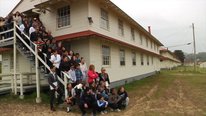 GLOBE Mission EARTH: Inspiring tomorrow's STEM Professionals
GLOBE Mission EARTH: Inspiring tomorrow's STEM Professionals
Sara Mierzwiak
-
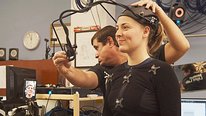 Signing Avatars & Immersive Learning
Signing Avatars & Immersive Learning
Lorna Quandt
-
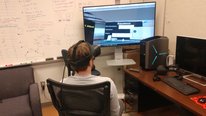 CLICK approach: Integrative learning experience with VR
CLICK approach: Integrative learning experience with VR
Christian Lopez
-
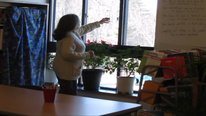 Becoming STEM: Bringing Remote Sensing to Local Spheres
Becoming STEM: Bringing Remote Sensing to Local Spheres
Betsy Stefany
-
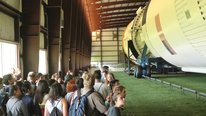 Value of Authentic Research Experiences for HS Students
Value of Authentic Research Experiences for HS Students
Margaret Baguio
-
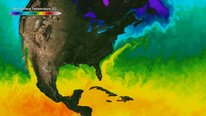 Linking Formal & Informal Investigations of Climate Data
Linking Formal & Informal Investigations of Climate Data
Leigh Peake
2344 Views
Continue the discussion of this presentation on the Multiplex. Go to Multiplex
2344 Views
presentation
has been viewed
Related videos you might be interested in...
-
 GLOBE Mission EARTH: Inspiring tomorrow's STEM Professionals
GLOBE Mission EARTH: Inspiring tomorrow's STEM Professionals
Sara Mierzwiak
-
 Signing Avatars & Immersive Learning
Signing Avatars & Immersive Learning
Lorna Quandt
-
 CLICK approach: Integrative learning experience with VR
CLICK approach: Integrative learning experience with VR
Christian Lopez
-
 Becoming STEM: Bringing Remote Sensing to Local Spheres
Becoming STEM: Bringing Remote Sensing to Local Spheres
Betsy Stefany
-
 Value of Authentic Research Experiences for HS Students
Value of Authentic Research Experiences for HS Students
Margaret Baguio
-
 Linking Formal & Informal Investigations of Climate Data
Linking Formal & Informal Investigations of Climate Data
Leigh Peake


Mercy Mugo
Senior Research Analyst and Grants Specialist
Awesome work. How are you measuring the impact of the project?
John Moore
Executive Director
Welcome! The Institute for Earth Observations is located at the Palmyra Cove Nature Park … a 250 acre conservation area along the Delaware River. Between park visitors and school groups we see about 20,000 people per year. Our intent is to give students an outdoor experience consisting of exposure to the outdoor environment, make observations and measurements (using GLOBE Protocols) and then in our Environmental STEM Center investigate what that looks from space using environmental satellites. The objective of GLOBE Mission Earth in it broadest sense to infuse NASA resources into the GLOBE Program. Our part of this initiative is to train new GLOBE teachers, and develop and train teachers and students on the use of these emerging technologies. In our Innovation Lab we are giving students a first look at VR technology and the opportunity to explore the planet (and beyond). We are looking at the potential uses of VR/AR in labs within the K-20 community.
John Moore
Executive Director
Mercy thank you for your comment! With the teachers that we train for GLOBE we can follow up with them as they implement some oft the content in their classrooms. We also share our work with the GLOBE community through webinars and presentations. Perhaps our best assessment is looking at how many students conduct research and publish in venues such as the GLOBE Student Research Symposiums (SRS) and/or the GLOBE International Virtual Science Symposium.
Mercy Mugo
Peter Dorofy
Director of Science and Technology
Thanks Mercy. We are an informal science center and about 100 schools a year participate in the education program. Something we look for is how frequently a particular program is repeated by a visiting school. Each year we see more and more schools participating in the virtual reality lab. A portion of those schools repeat the VR program, while others are new comers.
Jeremy Roschelle
Director
Hi John,
I liked that you involved both VR and AR technologies and that you are bringing this directly to students who don't ordinarily have the experience.
Since you are out there bringing this to all kinds of students, I am wondering if there's anything beyond "taking the experience to them" you've learned about engaging students with backgrounds that aren't well-represented in NASA's current workforce? Has anything in your work with under-represented groups challenged you and what could we all learn from your experience?
Thanks for what you do!
jeremy
John Moore
Executive Director
Hi Jeremy,
As a former CTE teacher for 28 years, I felt fairly prepared for the challenges. In fact, the major reason Pete and I ventured into the world of VR/AR is that we felt that these students are rarely exposed to the topics of the geosciences in the K12 community. Using VR/AR we were able to design interactions with rather sophisticated data and open up a whole new world for them and give them a chance to explore potential opportunities for careers in NASA, NOAA, or other agencies. Investigating earth as a system challenges the students to explore the interconnectedness of our planet through the eyes of satellites and remote sensing.
Gerhard Salinger
Retired Program Officer
Having students who otherwise would only read about them or see them on TV experience advanced technologies is a good goal for informal education. However, is there evidence the use of VR and AR changes the way students and their teachers look at ecological issues?
Peter Dorofy
Director of Science and Technology
Hi Gerhard. Great question! We have not yet begun that particular research, but some of the app work being developed at the Institute was inspired by the following blog which relates to your question: https://blogs.unity3d.com/2019/11/22/how-immersive-experiences-inspire-empathy-and-real-world-behavior-change/
Sara Mierzwiak
What a great video highlighting all of your work! So proud to be associated with you guys. Experiencing the VR lunar lander was seriously the coolest thing ever. Keep up the great work! Sara
John Moore
Executive Director
Thank you Sara, right back at you!. We do have a very talented group to work with and we are proud to be a part of it!
Brian Campbell
John and Team,
This is a wonderful video displaying the capabilities of mixed realities. It really showcases a combination of science, technology, and participant excitement and enthusiasm. Hopefully, what you are doing here can be observed and duplicated at other informal education venues and in schools worldwide. Working with the GLOBE Program is such an amazing outlet to getting the technology to the education masses. Even though there may be a language barrier across the seas, science and technology are a universal language for learning, creating, exploring. Kudos!
Andrea Gingras
Nice video and awesome use of technology! Do you adapt the content presented based on age/grade level?
John Moore
Executive Director
Yes, for school visitations we construct programing that meets the needs of the age group and the requests of the visiting teachers. You can check out our website www.palmyracove.org, for a look at the activities that we offer. The VR/AR programs are standard expereinces. USOAR, Apollo 11, the Lunar Learning Expedition were developed in house by my co-presenter Peter Dorofy, as well as the AR program, HoloGLOBE. Several of our summer college interns developed a program introducing the park, and we have a couple of "canned" programs that we offer. So, depending on the groups grade level and interests, we plan their day. We have had kids from about 5 years old, to senior citizens (90+) engage in the VR experiences … all love it! Thanks for commenting!
Peter Dorofy
Director of Science and Technology
Thanks Andrea. Yes we do adapt the content. The AR and VR apps we either develop ourselves or adopt from another publisher work best for ages 8+. The majority of the students that visit our center are 3rd-6th grade. We design lessons and activities for the HoloGLOBE app that best fit that grade range. Lunar Learning Expeditions was designed for older audiences 12+. The first iteration was meant to give individuals a VR experience of being on the Moon without the hassle of having to learn and navigate in VR. We have had younger children try out these experiences, the limitation is usually hardware related. A head mounted display will sometimes be just too big for a child. We also make sure that any VR experience is less than 5 minutes. Virtual Reality is still new and the effects of VR on young developing minds continues to be studied. We prefer to design our own VR apps when possible that fit our specific target audience rather than using other VR solutions marketed towards a broader audience.
Michael I. Swart
Eh, the funnest road trip ever in that RV! And great to explore both AR and VR. Will email y'all regarding the AR app development. Very excited to see AR being developed that would allow us to leverage the phones that HS students already a lot of time on. This addresses both access issues and with a curriculum that is phone based, would make the phone an asset in the classroom! Thanks for doing and sharing this work.